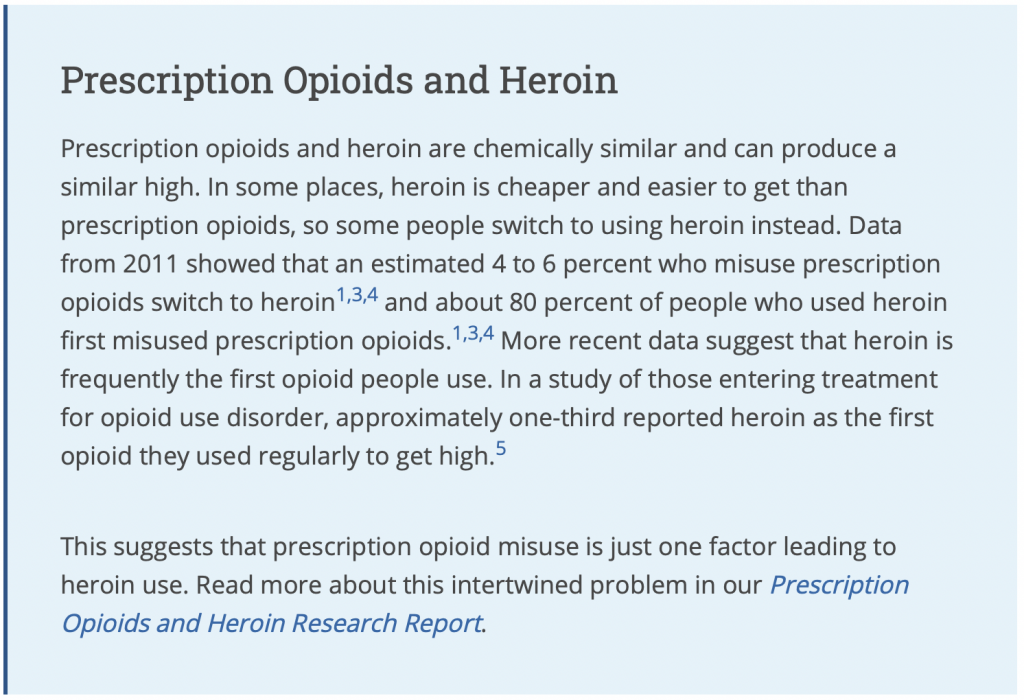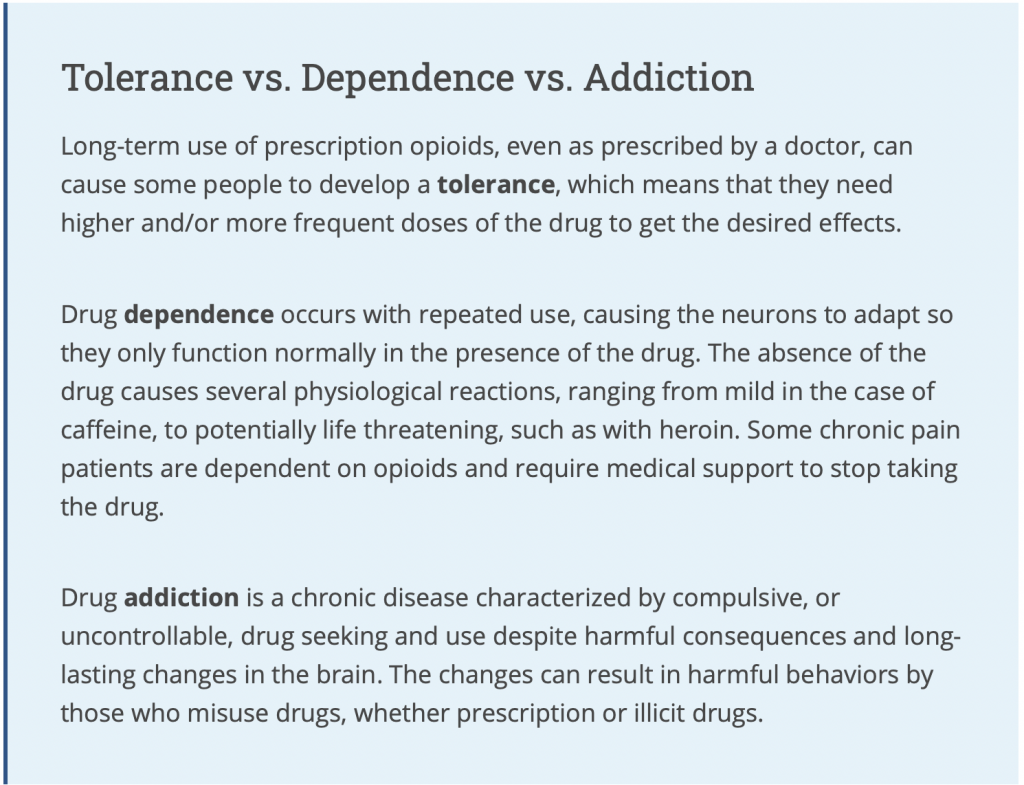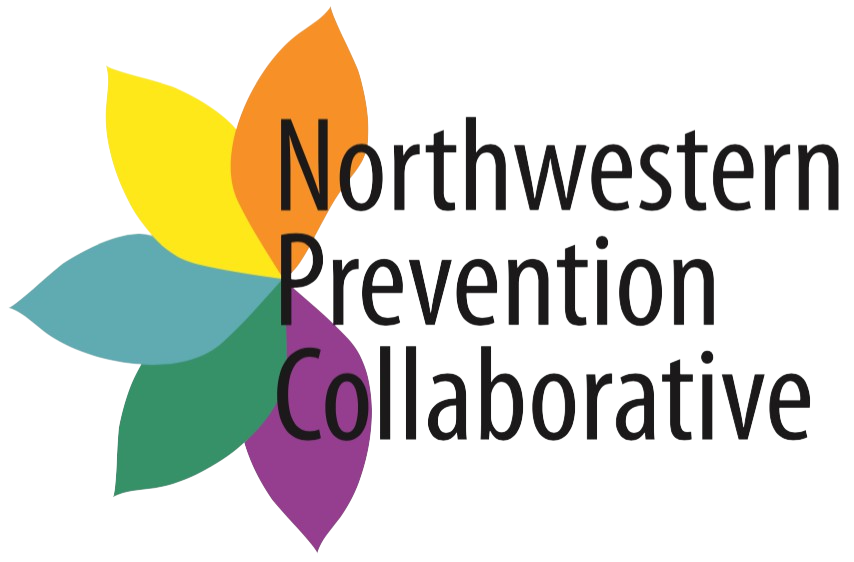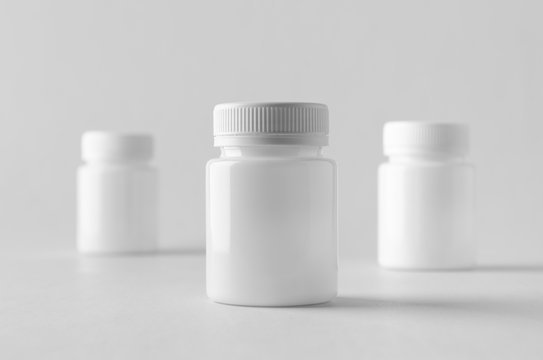Opioids are a class of drugs naturally found in the opium poppy plant. Some prescription opioids are made from the plant directly, and others are made by scientists in labs using the same chemical structure. Opioids are often used as medicines because they contain chemicals that relax the body and can relieve pain. Prescription opioids are used mostly to treat moderate to severe pain, though some opioids can be used to treat coughing and diarrhea. Opioids can also make people feel very relaxed and “high” – which is why they are sometimes used for non-medical reasons. This can be dangerous because opioids can be highly addictive, and overdoses and death are common. Heroin is one of the world’s most dangerous opioids, and is never used as a medicine in the United States.
Popular slang terms for opioids include Oxy, Percs, and Vikes.
What are common prescription opioids?
- hydrocodone (Vicodin®) oxycodone (OxyContin®, Percocet®)
- oxymorphone (Opana®)
- morphine (Kadian®, Avinza®)
- codeine
- fentanyl
How do people misuse prescription opioids?
Prescription opioids used for pain relief are generally safe when taken for a short time and as prescribed by a doctor, but they can be misused. People misuse prescription opioids by:
- taking the medicine in a way or dose other than prescribed
- taking someone else’s prescription medicine
- taking the medicine for the effect it causes-to get high
When misusing a prescription opioid, a person can swallow the medicine in its normal form. Sometimes people crush pills or open capsules, dissolve the powder in water, and inject the liquid into a vein. Some also snort the powder.
How do prescription opioids affect the brain?
Opioids bind to and activate opioid receptors on cells located in many areas of the brain, spinal cord, and other organs in the body, especially those involved in feelings of pain and pleasure. When opioids attach to these receptors, they block pain signals sent from the brain to the body and release large amounts of dopamine throughout the body. This release can strongly reinforce the act of taking the drug, making the user want to repeat the experience.
What are some possible effects of prescription opioids on the brain and body?
In the short term, opioids can relieve pain and make people feel relaxed and happy. However, opioids can also have harmful effects, including:
- drowsiness
- confusion
- nausea
- constipation
- euphoria
- slowed breathing
Opioid misuse can cause slowed breathing, which can cause hypoxia, a condition that results when too little oxygen reaches the brain. Hypoxia can have short- and long-term psychological and neurological effects, including coma, permanent brain damage, or death. Researchers are also investigating the long-term effects of opioid addiction on the brain, including whether damage can be reversed.
What are the other health effects of opioid medications?
Older adults are at higher risk of accidental misuse or abuse because they typically have multiple prescriptions and chronic diseases, increasing the risk of drug-drug and drug-disease interactions, as well as a slowed metabolism that affects the breakdown of drugs. Sharing drug injection equipment and having impaired judgment from drug use can increase the risk of contracting infectious diseases such as HIV and other sexually transmitted diseases from unprotected sex.

Can I take prescription opioids if I’m pregnant?
If a woman uses prescription opioids when she’s pregnant, the baby could develop dependence and have withdrawal symptoms after birth. This is called neonatal abstinence syndrome, which can be treated with medicines. Use during pregnancy can also lead to miscarriage and low birth weight. Read more in the Substance Use in Women Research Report.
It can be difficult for a person with an opioid addiction to quit, but pregnant women who seek treatment have better outcomes than those who quit abruptly. Methadone and buprenorphine are the standard of care to treat opioid-dependent pregnant women. Methadone or buprenorphine maintenance combined with prenatal care and a comprehensive drug treatment program can improve many of the adverse outcomes associated with untreated opioid addiction. If a woman is unable to quit before becoming pregnant, treatment with methadone or buprenorphine during pregnancy improves the chances of having a healthier baby at birth.
In general, it is important to closely monitor women who are trying to quit drug use during pregnancy and to provide treatment as needed.

Can a person overdose on prescription opioids?
Yes, a person can overdose on prescription opioids. An opioid overdose occurs when a person uses enough of the drug to produce life-threatening symptoms or death. When people overdose on an opioid medication, their breathing often slows or stops. This can decrease the amount of oxygen that reaches the brain, which can result in coma, permanent brain damage, or death.
How can an opioid overdose be treated?
If you suspect someone has overdosed, the most important step to take is to call 911 so he or she can receive immediate medical attention. Once medical personnel arrive, they will administer naloxone. Naloxone is a medicine that can treat an opioid overdose when given right away. It works by rapidly binding to opioid receptors and blocking the effects of opioid drugs. Naloxone is available as an injectable (needle) solution, a hand-held auto-injector (EVZIO®), and a nasal spray (NARCAN® Nasal Spray).
Some states have passed laws that allow pharmacists to dispense naloxone without a personal prescription. This allows friends, family, and others in the community to use the auto-injector and nasal spray versions of naloxone to save someone who is overdosing.
Read more on the Naloxone webpage.
Can use of prescription opioids lead to addiction?
Yes, repeated misuse of prescription opioids can lead to a substance use disorder (SUD), a medical illness which ranges from mild to severe and from temporary to chronic. Addiction is the most severe form of an SUD. An SUD develops when continued misuse of the drug changes the brain and causes health problems and failure to meet responsibilities at work, school, or home.
People addicted to an opioid medication who stop using the drug can have severe withdrawal symptoms that begin as early as a few hours after the drug was last taken. These symptoms include:
- muscle and bone pain
- sleep problems
- diarrhea and vomiting
- cold flashes with goose bumps
- uncontrollable leg movements
- severe cravings
These symptoms can be extremely uncomfortable and are the reason many people find it so difficult to stop using opioids. There are medicines being developed to help with the withdrawal process, including lofexidine, a non-opioid medicine designed to reduce opioid withdrawal symptoms that was approved by the U.S. Food and Drug Administration (FDA) in 2018. The FDA has also approved sale of a device, NSS-2 Bridge, that can help ease withdrawal symptoms. The NSS-2 Bridge is a small electrical nerve stimulator placed behind the person’s ear, that can be used for up to five days during the acute withdrawal phase.
What type of treatment can people get for addiction to prescription opioids?
A range of treatments including medicines and behavioral therapies are effective in helping people with opioid addiction.
Two medicines, buprenorphine and methadone, work by binding to the same opioid receptors in the brain as the opioid medicines, reducing cravings and withdrawal symptoms. Another medicine, naltrexone, blocks opioid receptors and prevents opioid drugs from having an effect.
Behavioral therapies for addiction to prescription opioids help people modify their attitudes and behaviors related to drug use, increase healthy life skills, and persist with other forms of treatment, such as medication. Some examples include, cognitive behavioral therapy which helps modify the patient’s drug use expectations and behaviors, and also effectively manage triggers and stress. Multidimensional family therapy, developed for adolescents with drug use problems, addresses a range of personal and family influences on one’s drug use patterns and is designed to improve overall functioning. These behavioral treatment approaches have proven effective, especially when used along with medicines. Read more about drug addiction treatment in the Treatment Approaches for Drug Addiction DrugFacts.

This information is sourced from www.drugabuse.org. Visit them for more resources and information about opioids and how to get free from addiction.
Learn More
For more information about opioid medications:
- Commonly Used Drugs chart
- Misuse of Prescription Drugs Research Report
- NIDA for Teens Drug Facts on Prescription Pain Medications (Opioids) – Offers resources for teens and teen influencers. Get the latest on how drugs affect the brain and body. Features videos, games, blog posts, and more!
- Easy-to-Read Drug Facts on Pain Medicine (Oxy, Vike) – Has pictures and videos to help readers understand the text. The website also can read each page out loud.
References
- Muhuri PK, Gfroerer JC, Davies MC. Associations of Nonmedical Pain Reliever Use and Initiation of Heroin Use in the United States. Rockville, MD: Substance Abuse and Mental Health Services Administration; 2013. https://www.samhsa.gov/data/sites/default/files/DR006/DR006/nonmedical-pain-reliever-use-2013.htm. Accessed May 13, 2016.
- Cicero TJ, Ellis MS, Surratt HL, Kurtz SP. The Changing Face of Heroin Use in the United States: A Retrospective Analysis of the Past 50 Years. JAMA Psychiatry. 2014;71(7):821-826. doi:10.1001/jamapsychiatry.2014.366.
- Carlson RG, Nahhas RW, Martins SS, Daniulaityte R. Predictors of transition to heroin use among non-opioid dependent illicit pharmaceutical opioid users: A natural history study. Drug Alcohol Depend. 2016;160:127-134. doi:10.1016/j.drugalcdep.2015.12.026.
- Cicero TJ, Ellis MS, Kasper ZA. Increased use of heroin as an initiating opioid of abuse. Addict Behav. 2017 Nov;74:63-66. doi: 10.1016/j.addbeh.2017.05.030. Epub 2017 May 23. PubMed PMID: 28582659. https://www.ncbi.nlm.nih.gov/pubmed/28582659
Source: National Institute on Drug Abuse; National Institutes of Health; U.S. Department of Health and Human Services.

